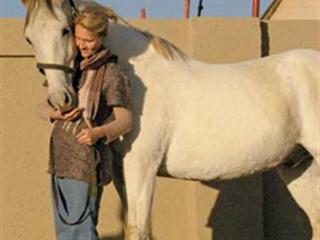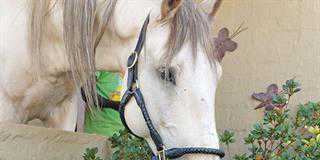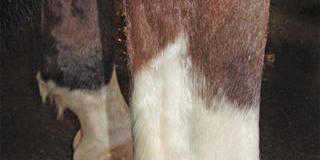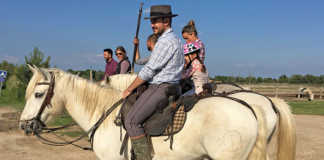
The best place to start basic dressage is next to your horse. You need to develop a ‘feeling’ for your horse and likewise it for you. Feeling is a connection both mental and physical. Your horse already knows your state of mind – you need to know its state of mind. There needs to be mutual respect. On a physical level, you want your horse to follow your feel on the reins, yield to the feel of your legs and feel your level of energy, and respond accordingly with ease.
The first step to achieving this is making your horse move its head and neck. Put it in a halter and attach a long lead rope, then stand at your horse’s shoulder, with the hand closest to your horse on its neck and the other hand holding the rope about 30cm from the clasp. Now ask it to follow your ‘feel’ and bend its neck around just a little.
Don’t pull the head around. The hand holding the rope needs to be raised just a little. If your horse is in tune with you, it will feel the change in the halter and turn its head. It’s very important that you release the slight pressure of the rope the minute it turns its head. Reward your horse when it does what you ask of it.
Don’t jerk
It may take some time for your horse to work all of this out. It may even pull back against you the first few times. If this happens, don’t jerk the rope, wait for the horse to work it out. This lateral flexion can be built up until your horse is able to hold its head bent for up to a minute. The rope must have almost no tension in it and the horse must appear to follow your hand as if by magic. Do this exercise from both sides.
Halting
Once your horse has mastered this, it’s time to teach it to walk and halt using the same principle. Start with a long lead and a clear voice command. When you move forward your horse needs to do the same; then you say: “And WALK!”. The minute you stop, so must your horse. The command is: “And HALT!”. Always use the word ‘and’ in front of your command. This tells your horse it needs to prepare for the command.
The last exercise is practising the halt on your horse’s back, using only your mind. You need to think “Halt!” – this will transfer through your body, and the horse should stop. When your horse does this with ease you can start to say: “And HALT!” Then reward it. When your horse sees you’re rewarding it for following your lead it will want to be with you and do things for this reward. Which can be a pat and “Good boy” or “Good girl”. Or a healthy treat, such as apple circles or raisins.
The right tone
Associating a particular tone with commands makes it easier for your horse to understand. Say “Halt!” firmly, but quietly. Say “Walk!” firmly, but louder. Say “Trot” firmly, but with more energy than “Walk” and roll your ‘R’ as in: “Trrrrrot!”. Finally, say “Canter!” firmly and loudly (but don’t scream) and with the most energy. This will make your horse understand.
I figured this out while teaching young children to ride. The minute an uncertain rider has a horse move faster than they anticipate, the child lets out a squeal. This inevitably sends the horse off faster, without exception. The child that is relaxed usually has to keep kicking their pony to move forward.
Contact Kim Dyson on 082 888 6511 or at [email protected]. Please state ‘Horse therapy’ in the subject line.













